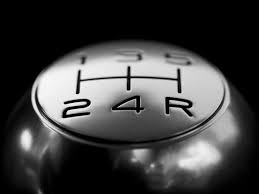The “racing concept of the month” articles are way of sharing the general racing knowledge that has been developed over the decades in the Martin 242 fleet – this is the seventh of a series (ok...not quite montlhy). All are loosely based on the excellent content in this article by Michael Clements.
Shifting Gears

One of the beautiful things about racing the Martin 242 is that it’s a very simple boat to sail – a true sailor’s boat. Winning and losing races most often comes down to the skill of the crew, rather than the subtle demons of boat setup or sail trim that can consume you in more complicated boats.
That said, there’s still some thought that should be given to setting up your boat for different conditions to maximize performance. For a simple view of this I’ve broken sailing conditions up into three different modes:
1) Light – Need Power
2) Medium – Good Power
3) Heavy – Too Much Power
Exact wind ranges and sea states are just a rough guide – but in the Martin 242 “Light” is something like 0-6 knots, “Medium” is 6-12 knots, and “Heavy” anything above about 12 knots of windspeed. Sea state is also a factor, in general the flatter the water the more set up towards the Heavy side you can be for less power and more point, and the lumpier it is the more you need to set up towards the Light side so you can have some extra power to keep the boat moving through the chop. The “Good Power” condition is any time you can control heel of the boat with crew weight alone, without having to start depowering the sail plan.
As I said, there’s not all that much to tweak on the Martin, but here’s a list of things to adjust, roughly in order of most to least important.
The Big 4
- mainsheet
- traveler
- jibsheet
- crew weight
|
Setting |
Light |
Medium |
Heavy |
|
Mainsheet |
Eased for power – keep the top telltale flowing always |
Eased just enough to keep the top telltale stalled around 60% of the time (this may be pretty tight relative to other boats you may have sailed!) |
Very tight. The upper part of the tapered mast will automatically bend to open the main leech and flatten the main. Telltale should be flying. |
|
Traveler |
Max up – default to traveler at edge of cockpit |
Between center and max up. Up for more point, down for less power/more speed |
Center to all the way down. The more overpowered you are, the more traveler drops |
|
Jibsheet |
Ease 1-2” for power |
Max |
Max – only ease if very windy and main flogging |
|
Crew Weight |
Between all 3 down to all 3 to weather. The helm has best feel for crew weight – the boat likes a bit of heel in all conditions. |
Hiking hard! |
|
The Important but not Critical
- jib luff tension
- jib leads
- cunningham
- outhaul
- spinnaker pole height
These are important but not critical adjustments. They’ll help you eke out some fraction of a knot of boatspeed, but not having an optimal setting won’t necessarily win or lose you a race.
|
Setting |
Light |
Medium |
Heavy |
|
Jib Luff Tension |
Loose – a few wrinkles in the luff ok |
Medium – take out wrinkles |
Max tight |
|
Jib leads |
Baseline |
Baseline |
Aft 2”-4” |
|
Cunningham |
Off |
Off – some wrinkles ok |
Max tight |
|
Outhaul |
Eased 2-4” from max |
Eased 1”-2” from max |
Max |
|
Pole Height |
Adjust to keep spinnaker tack & clew level. Light = lower, Heavy = higher. |
||
The Optional or Forget It
- rig tension
- vang
- backstay
- tweakers
Rig tension settings are described in this article...find a baseline setting that you like and works for your boat, and you can pretty much keep it there for most English Bay sailing. We might put a turn or two on if it looks like it’s going to be quite windy, but we mostly forget to do this on Back in Black and don’t seem to suffer too much in breeze.
Vang is not needed upwind, all the main leech tension is controlled with the mainsheet. You only need to put some on when reaching.
Backstay – open to some debate (stay tuned for a future article!) but generally not needed. We never touch ours on Back in Black in any condition, but many boats start putting on a bit of backstay above 10 knots of wind or so. The backstay has a big impact on the mast bend and it can quickly over-flatten the main and kill any leech tension upwind; on the other hand it does work to depower by opening the slot without having to drop the traveler. Good idea to snug up downwind in breeze. If you’re having trouble furling the jib downwind briefly cranking on the backstay can help.
Tweakers – we don’t have any rigged, but maybe a good idea downwind in breeze...see this article.
The Secret Weapon
There is of course one often overlooked but critical sail control on the Martin 242 that can make all the difference in the world. It is my belief that this is truly what separates the great sailors at the top from the hungry pack of wolves behind. Ignore this at your peril. A slight adjustment to the }); jQuery(function($){ initTooltips(); $("body").on("subform-row-add", initTooltips); javascript end
See you all on the racecourse!
-written by Reto

